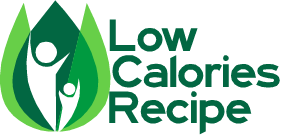To achieve a healthy and lasting weight loss it is important to invest in good eating habits

To achieve a healthy and lasting weight loss it is important to invest in good eating habits. For this, there are different types of diets to lose weight and each uses its own method, according to the desired purpose.
Eating a diet to lose weight is to acquire eating habits in order to lose, maintain or gain weight. To lose weight healthily, it is necessary for the body to expend more calories than it consumes.
Therefore, diets are usually used in conjunction with physical exercise to lose weight .
Simple Diet Tips
- Do not go more than 4 hours without food
- Sleep well. During sleep, our body produces leptin, a hormone capable of controlling the feeling of satiety throughout the day
- Drink at least 2 liters a day
- Invest in the salad. It helps to cheat the stomach and eat less with meals. Look for vegetables and legumes that you like and don’t be too caloric
- Prefer whole foods. They contain more nutrients and fibers, which do a damned good for your body
- Avoid the intake of salt and high sodium foods, which favor fluid retention
- Prefer less caloric preparations, such as roasts, boiled or steamed. Gratin, fried, parmigiana or breaded foods should be avoided
- Seek help from nutritionists or nutritionists
- If you overdo it sometime, don’t give up. Start again the next day.
Menu suggestions for healthy weight loss
Below we see the calorie distribution per meal based on a 2000 kcal diet, consisting of 6 daily meals.
| Meal | Suggestion |
| Breakfast | Invest in fruits, cereals, whole grain breads and oilseeds. To drink: natural juices, coconut water, teas, milk or coffee. An ideal breakfast can have 20% of daily consumption, about 400 kcal. |
| Morning snack | This meal should be light and fast, with foods with a low glycemic index (slow absorption). Invest in fruits, oilseeds, natural and whole foods. To drink: natural juices, teas or coconut water. The ideal morning snack can have 5% of daily consumption, about 100 kcal. |
| Lunch | The recommended lunch dish is divided into four parts: two parts filled with salads and vegetables, one part with carbohydrate sources and one part with protein sources. To drink: natural juices or teas. The ideal lunch can have 30% of daily consumption, about 600 kcal. |
| Afternoon snack | Make snacks that contain carbohydrate, protein, and good fat. Give preference to natural and whole foods. Other good suggestions are dried fruits, cereals or nuts. To drink: coffee, teas or yogurts. The afternoon snack can have 15% of daily consumption, about 300 kcal |
| Dinner | Carbohydrates, proteins (simple to digest), fats, vitamins and minerals must be provided properly. Fruits and vegetables are good foods for that meal. To drink: natural juices and teas. Dinner can have 25% of daily consumption, 500 kcal |
| Supper | Choose a protein-rich snack. if you want, you can add a fruit, which is a light carbohydrate or, at most, 1 whole toast. Supper can have 5% of daily consumption, 100 kcal |
This example can vary according to the eating habits and needs of each individual, but from it we can see that one should not restrict the diet by eating very little in some periods and exaggerating in others.
Remembering that when thinking about adhering to a diet, the best thing to do is to seek help from a professional, such as a nutritionist, nutritionist or endocrinologist.
Use of medicines and diet to lose weight
The use of medication can only facilitate weight loss, but if there are no lifestyle changes there are chances of regaining lost weight.
All types of weight loss medications should only be used when the adoption of a healthier diet and the practice of physical exercises have not resulted in weight loss.
When the body mass index (BMI) remains higher than 29.9 after treatment with dietary reeducation, the use of drugs to help in the weight loss process is indicated.
Every process must be accompanied by a professional, such as a nutritionist, nutrologist or endocrinologist.








